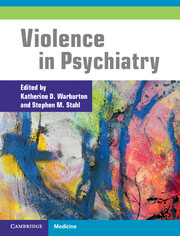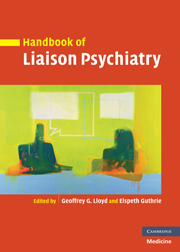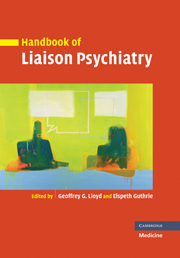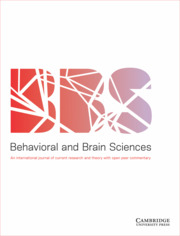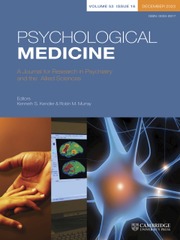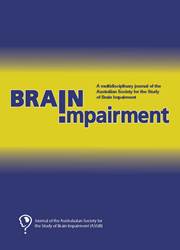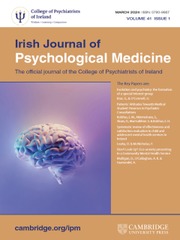Violence in Psychiatry
The association between violence and mental illness is well studied, yet remains highly controversial. Currently, there does appear to be a trend of increasing violence in hospital settings, including both civilly and forensically committed populations. In fact, physical aggression is the primary reason for admission to many hospitals. Given that violence is now often both a reason for admission and a barrier to discharge, there is a pressing need for violence to be re-conceptualized as a primary medical condition, not as the by-product of one. Furthermore, treatment settings need to be enhanced to address the new types of violence exhibited in inpatient environments and this modification needs to be geared toward balancing safety with treatment. This book focuses on violence from assessment, through underlying neurobiology, to treatment and other recommendations for practice. This will be of interest to forensic psychiatrists, general adult psychiatrists, psychiatric residents, psychologists, psychiatric social workers and rehabilitation therapists.
- Focuses on violence from assessment, through underlying neurobiology, to treatment and other recommendations for practice
- Reconceptualizes violence as a primary medical condition, not as the by-product of one
- Addresses new types of violence exhibited in inpatient environments to enhance a balance between safety and hospital treatment
Product details
April 2016Adobe eBook Reader
9781316553930
0 pages
0kg
10 b/w illus. 32 colour illus. 55 tables
This ISBN is for an eBook version which is distributed on our behalf by a third party.
Table of Contents
- List of contributors
- Part I. Statement of the Problem:
- 1. Deinstitutionalization and the rise of violence
- 2. The new mission of forensic mental health systems: managing violence as a medical syndrome in an environment that balances treatment and safety
- Part II. Assessment:
- 3. The evolution of violence risk assessment
- 4. Assessment of aggression in inpatient settings
- 5. Clinical assessment of psychotic and mood disorder symptoms for risk of future violence
- 6. Inpatient aggression in community hospitals
- 7. Prevalence of physical violence in a forensic psychiatric hospital system during 2011–2013: patient assaults, staff assaults, and repeatedly violent patients
- 8. The psychiatrist's duty to protect
- Part III. Neurobiology:
- 9. Deconstructing violence as a medical syndrome: mapping psychotic, impulsive, and predatory subtypes to malfunctioning brain circuits
- 10. Aggression, DRD1 polymorphism, and lesion location in penetrating traumatic brain injury
- 11. Is impulsive violence an addiction? The habit hypothesis
- 12. The neurobiology of psychopathy: recent developments and new directions in research and treatment
- 13. The neurobiology of violence
- 14. Impulsivity and aggression in schizophrenia: a neural circuitry perspective with implications for treatment
- 15. Serotonin and impulsive aggression
- Part IV. Guidelines:
- 16. California State-Hospital Violence Assessment and Treatment (Cal-VAT) guidelines
- Part V. Psychopharmacology:
- 17. Effectiveness of antipsychotic drugs against hostility in patients with schizophrenia in the Clinical Antipsychotic Trials of Intervention Effectiveness (CATIE) study
- 18. Clozapine: an effective treatment for seriously violent and psychotic men with antisocial personality disorder in a UK high-security hospital
- 19. Augmentation of clozapine with amisulpride: an effective therapeutic strategy for violent treatment-resistant schizophrenia patients in a UK high-security hospital
- 20. The psychopharmacology of violence: making sensible decisions
- 21. Treating the violent patient with psychosis or impulsivity utilizing antipsychotic polypharmacy and high-dose monotherapy
- 22. A rational approach to employing high plasma levels of antipsychotics for violence associated with schizophrenia: case vignettes
- 23. Illustrative cases to support Cal-VAT guidelines
- Part VI. Treatment Interventions:
- 24. A new standard of care for forensic mental health: prioritizing forensic intervention
- 25. Forensic focused treatment planning: a new standard for forensic mental health systems
- 26. Implementing an ecological approach to violence reduction at a forensic psychiatric hospital: approaches and lessons learned
- 27. The appropriateness of treating psychopathic disorders
- 28. Psychosocial approaches to violence and aggression: contextually anchored and trauma-informed interventions
- 29. Co-morbid mental illness and criminalness: implications for housing and treatment
- 30. Crime, violence and behavioral health: collaborative community strategies for risk mitigation
- 31. New technologies in the management of risk and violence in forensic settings
- 32. Risk reduction treatment of psychopathy and applications to mentally disordered offenders
- Index.

